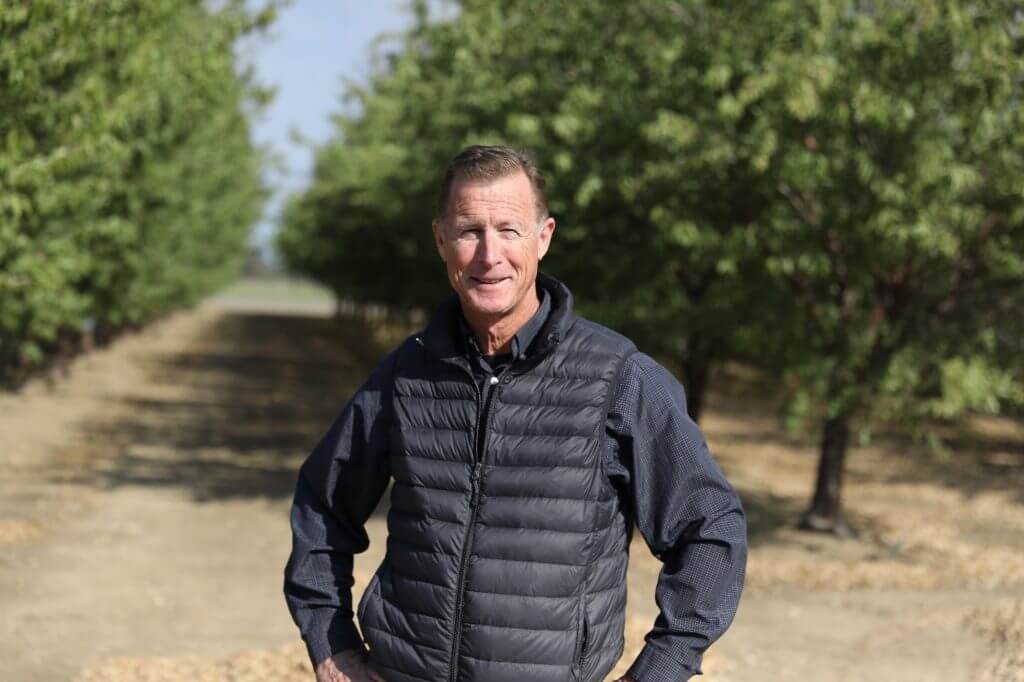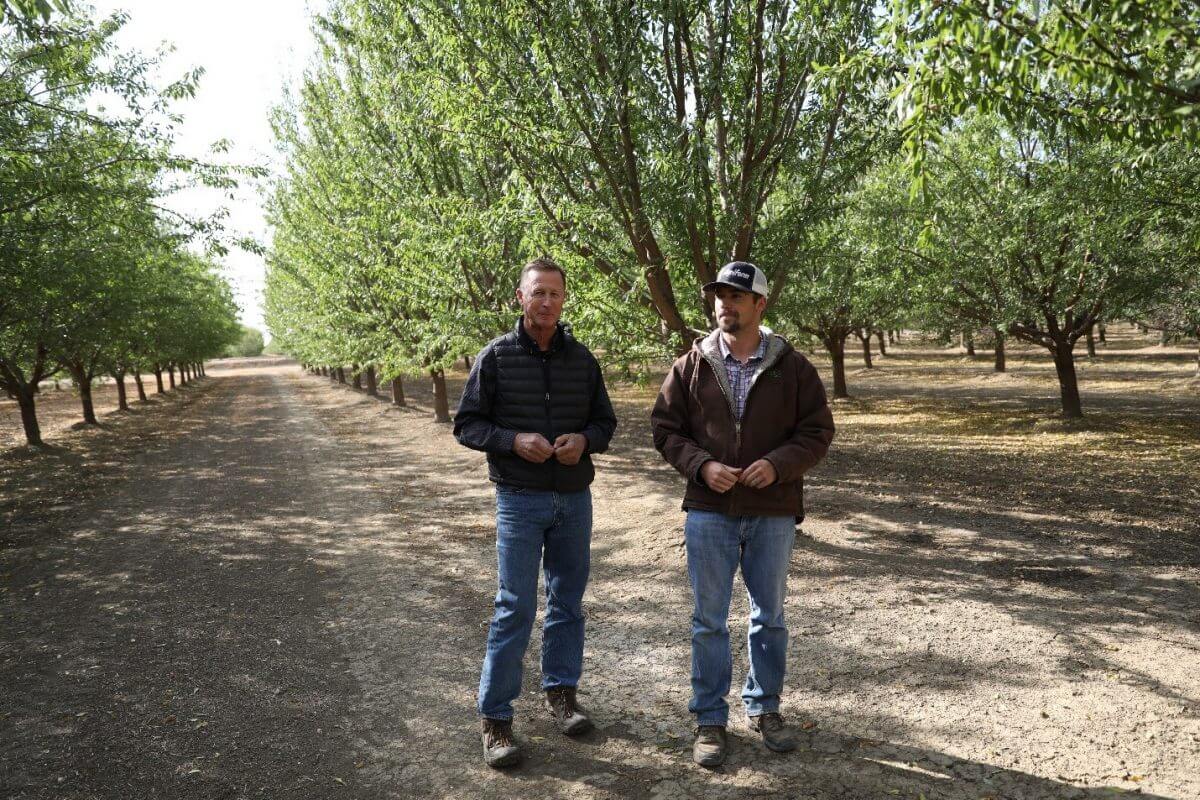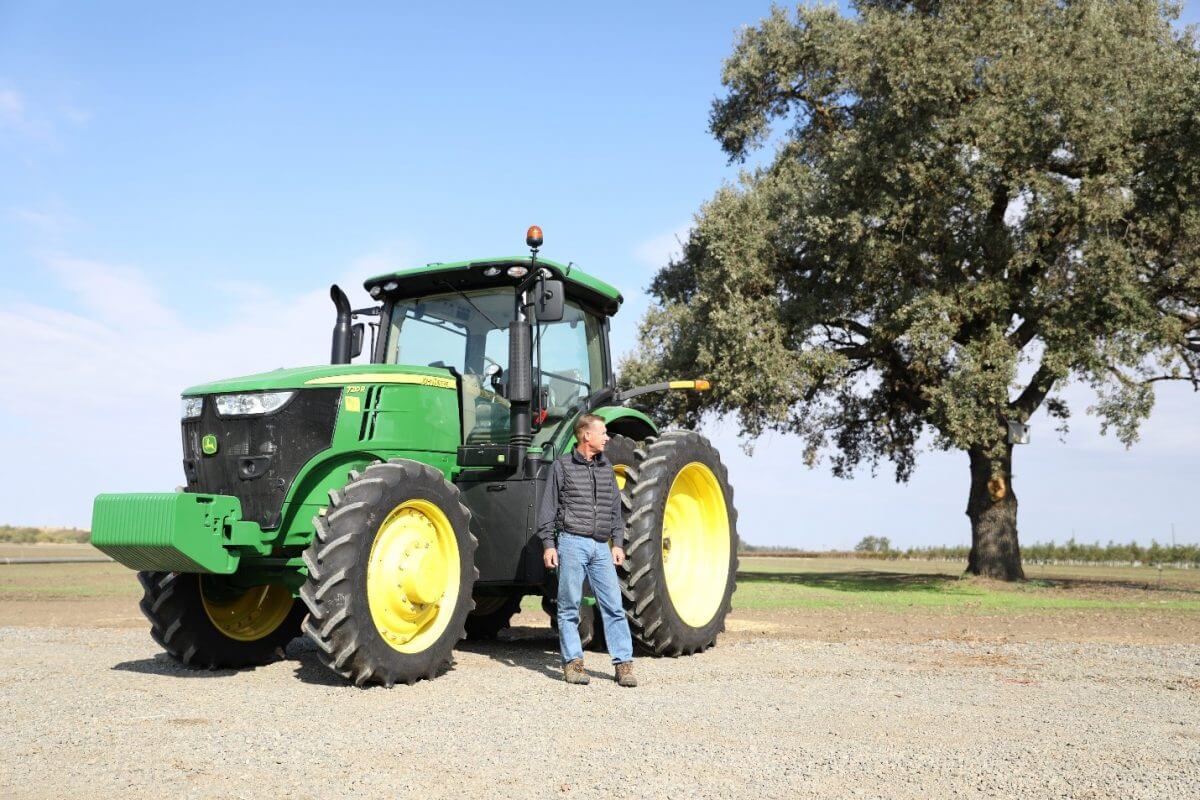Plant Chat: Frank Muller, California Farmer

I’m so glad to have Frank Muller from Muller Ranch on my Plant Chat today. I had the pleasure of meeting Frank on his farm during the Heart of California Farm Tour last summer. The Muller Ranch Farm is located in Yolo County, California, and grows processing tomatoes, specialty peppers, corn, wheat, canola, cucumbers, grapes, garlic, walnuts, almonds, sunflowers and other crops in several thousand acres throughout Yolo County. Although its primary reason for existence is to produce high quality products, Muller Ranch views several other issues as vital to the proper functioning of a company. Muller Ranch is committed to critically looking at each of the above categories to see how it can better act as a major producer in a global world. The Muller Family has farmed in this region for over 40 years. Sustainability efforts and responsibility have always gone hand-in-hand with farming practice. Muller Ranch is committed to continuous improvement in all the above areas. Continue reading to learn more about Frank’s thoughts regarding modern agriculture, the environment, animal welfare, and more.

What are the primary ways in which agriculture has changed in the U.S. over the past 50 years?
Fifty years ago, the trend was for farms to get bigger to survive. In our area there were many farms of 100 to 200 acres where the owners raised their family on the farm and supported the family with earnings from the farm. The children went off to college and did not return because it was no longer possible to make a living on a small farm. The remaining farmers got bigger and rented the retiring farmers land. It was a “get big or go home” situation. There were no markets beyond the traditional commodity-based crops. Since that time, other non- traditional markets have opened up, such as organic, which has expanded opportunities for small, startup and innovative farms. Knowledge, technology and changing consumer preferences have changed what is grown, how crops are grown, and how crops are marketed and packaged. There has been a broadening of opportunities – not really a separation- there are just so many ways to farm, approach soil health, market, interact with consumers and embrace technology. Farms and farmers can pick and choose where and who they want to be and how they want to fit into this world because there are opportunities in every segment of the market. Opportunities are now there for new farms and young farmers that were not available when I started my farming career in 1980.
How do these changes impact the environment, animal welfare, and the community?
Farms are very responsive to communities as they are supplying everything that the consumer demands. Organic, free range, cage free, biodynamic, inexpensive, cosmetically perfect, safe, third party audited and inspected, sustainable and other choices are all available due to the preferences of people in the communities. There is more knowledge of animal welfare by the consumer and producer and consumers are showing a willingness to pay a higher price for products raised with animal welfare in mind. The focus on environmental awareness and compliance has come from many different avenues. Consumers are asking more questions, regulators and the government are placing further restrictions on practices on the farms, large retailers and processors are placing demands on farmers and individual farm philosophies are all leading to change.
What is the single aspect of modern agriculture that most concerns you?
I worry that there is a short-sided approach to farming that will lead to long term problems. Also, water availability will become an increasingly important concern.
How do you feel the public perceives agriculture today? Do they have good knowledge of the challenges, practices, and outcomes?
Again, I think that there is a wide variation of how agriculture is perceived by the public just as there is a wide range of consumer preferences. This is not a problem at all and is good in many respects. Some people will never care but others really care. For those that care, they can quickly get in tune with the challenges, practices and outcomes through social media, farm visits and interaction, farmers markets, and many other ways where they can directly tie into what is happening on the farm. This was not available 50 years ago.

How does the cultivation of monocrops impact the sustainability of the food system?
It depends how you define monocrops and how the crops are farmed. Much of it comes down to how the soil in managed and how much focus is placed on soil health. On our farm we grow both organically and conventionally. Single crops are grown on a field each year and are not inter-planted. This would be considered mono-cropping, but crops are rotated from field to field each year. This is true for our organic and conventional crops. I do not feel that this system has affected the long-term sustainability of our farm. We use compost, cover crops, and crop rotations in both systems and pay a great deal of attention to soil health which is the key to sustainability.
Is agricultural efficiency sometimes confused for sustainability? If so, why?
Efficiency has to part of sustainability in my opinion because if you are running a farm that is not efficient you are wasting resources. One of the principles of sustainability is that you use resources wisely and inefficiency means you are not using resources wisely. This can be true for the use of labor, water, fuel and most other inputs on the farm. So, rather than the issues getting confused, they must go hand in hand.
When it comes to animal agriculture, what are the most pressing concerns facing our current system?
I think the animal awareness concerns are good but should not be taken to an extreme. I believe that waste management is a big concern especially in larger dairy operations, feedlots and confined production units for hogs, chickens and turkeys especially in places where regulations are less stringent.
What will it take to move the needle from our current agricultural system to a more sustainable model, which takes care of the soil, natural resources, animals, communities, and people?
I believe the needle is constantly moving and is heading in a direction that is more responsive and more sustainable. Consumer demand in the marketplace and the willingness of the consumer to pay higher prices for foods that meet their needs is the single most significant way to change the dynamic. It is up to the consumer to educate themselves on how their food purchasing choices affect their health, the farms and their communities. A farm cannot change the community, but it can supply what the community demands and prefers. There will be no food deserts in communities if the local consumers show a demand and willingness to purchase foods of higher quality of higher standards. It all starts with education and has always started with education – some people just don’t care.

The sustainability movement has often focused on small, organic, local agriculture within a community, but what are the limitations for this sort of agricultural system within the overall food system? What are the successes of these sorts of agricultural systems?
The success of these agricultural systems is that they are responsive to consumer change and can shift gears quickly. There are some issues that they are vulnerable to. The first is the heavy reliance on hand labor. With the increasing cost of labor, the availability of labor and the unknowns of immigration reform, the aging of the farmworker workforce and other worker regulatory issues, these small farms are more vulnerable than larger farms that can afford to replace labor with technology. Another issue is the ability to achieve long term financial success. The small farms can be restricted by their access to capital, the lack of profitability and the inability to afford such things as medical insurance and retirement savings. If the small farms cannot be profitable they may have a great philosophy, but they are not economically sustainable. The third issue is the access to markets, oversupply and the possibility of falling prices. As more small farms pop up they are all competing for the same markets and the oversaturation and over supply puts more pressure on the marketplace. In addition, there is amazing quality organic products coming from large organic farms and this puts additional pressure on the small farms.
What are some solutions that can be applied to make today’s modern agriculture feasible yet more sustainable? Do you have an example you can share?
There needs to be more of a long-term outlook and a more cooperative effort between the farmers and the buyers. This is really difficult to do because, no matter how much talk is put into establishing a more collaborative effort, buyers want to always get the product they are purchasing for a lower price. I have had some success in this endeavor. We raise a large number of acres of processing tomatoes and have a huge investment in the land, machinery and people to raise these tomatoes. Our contracts have traditionally been one-year contracts. I was able to convince one of my most progressive customers, a large international food processor, to provide a three-year evergreen contract to me in exchange for running our tomato production according to the sustainable principles that we developed cooperatively. We have used this contract model for over 15 years and both of our companies have benefitted. I am able to look at my farm production over a longer term and can make investments in sustainability that may have a longer-term payback than my one-year production cycle but it can now be justified. I sell the tomatoes for a dollar per ton less than the market price so the processor benefits, but they agree to buy all of my production regardless of the yield, so I benefit also. It is a win – win.
What are some simple messages dietitians can communicate to their clients and the public about how they can support a more sustainable agricultural system in their daily lives?
First of all have your clients buy local or grown in the USA as this will help support our farms which have the highest food standards in the world. Have your consumers evaluate what is important to them in their food choices and help them understand how their choices promote change. If every consumer in the USA all of a sudden demanded and purchased only free-range chickens or cage free eggs, I guarantee that the farms would change very quickly to supply the market. The same could be said for organic. The consumer must be willing to pay the price if their choice costs more to produce or has special attributes, such as organic, than would a conventional product. Have the consumers educate themselves about things such as GMO crops and purchase only what they are comfortable with. Know where you food comes from. Buy products that are in season and are produced locally and do not have to be shipped half way around the world. This will help to reduce the carbon footprint caused by transportation. Eat canned tomatoes!
Note: This is not a sponsored post, however Sharon is a nutrition adviser for the Tomato Products Wellness Council.



Great blog Sharon,
I very much liked your Farm Chat with Frank Muller. Mr Muller is impressive in his knowledge of his craft. I am proud to call him our company Chairman and am grateful for his leadership.
All the best, Andy Russick